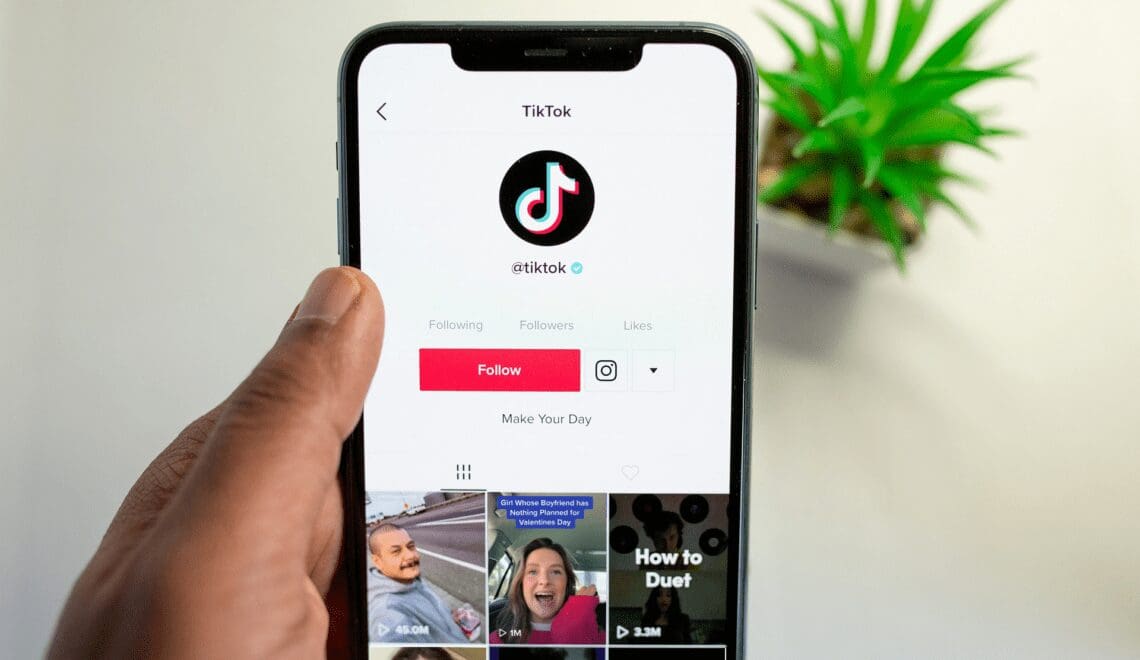Two years in, and I still have TikTok: Some thoughts

I used to be Hodges’ only resident TikTok expert – that is, until they hired someone younger than me. *sighs sadly*
In January of 2019, I downloaded TikTok – for research purposes, of course. My work at Hodges demanded it, and it had really started to take off in the U.S. Early TikTok adapters will know that the platform has changed quite a bit. Writing this, I am floored that I’ve surpassed my two-year anniversary with the addictive app. The pandemic has rendered time a construct; it feels like it was just yesterday I decided to hit the download button.
Today, TikTok is no longer full of middle-aged individuals making cringe videos. Yes, that still exists, and I shudder every time one of those videos finds itself on my “For You Page.” But for the most part, it’s (mostly Gen-Z) individuals being extremely creative, funny, smart, daring and relatable – and some of them are getting paid pretty darn well for it.
All this is to say that my original blog post about the app is officially outdated, so here are my latest musings.
A real opportunity for new creators
Instagram is notoriously slow when it comes to growing an account following from scratch. My little sister has a comedy account (soft plug follow @_thegills) that’s she’s been running since December 2019, but the climb to Instagram fame is slow. After a year of having the account, she is close to breaking 1,000 followers. When it comes to reaching new audiences, you can reach only your followers and your followers’ followers, assuming they feel compelled to share.
I did convince her to get a TikTok and start posting comedy content to that platform. She posted her first video in November, and as of this post, she is closing in on 10,000 followers, and one of her videos recently hit one million views.
While I am absolutely, shamelessly plugging my hilarious, talented sister, it’s also a great mini case study for the difference in the platforms’ potential growth trajectories.
Unlike Instagram, TikTok continuously serves its users content from new creators. It doesn’t matter if you have four or four million followers, your video will get shown to people to interact with, comment on, share and like. The TikTok algorithm values interesting creators and creative content, and the way those creators can grow their audiences, reflects the algorithm’s real power.
Authenticity is key
In my last post, I alluded to the authenticity of TikTok’s content. And though things have changed, more than ever, this has stayed the same.
TikTok content is made for TikTok. While creators may use outside tools to help with closed captions or editing clips together, videos that do well on TikTok use the platform’s built-in tools. They are vertical. They use trending sounds and music. They use features like duets and stitches to engage with other users.
Brands that are unwilling to relinquish control and get with the platform will struggle to find virality and success.
Speaking of captions…
In 2017, fellow Hodger Greg Surber wrote an excellent blog post about the importance of captions in social media videos. That was 2017. Today, captions are even more important, especially so for TikTok.
While the specifics of the TikTok algorithm are unknown, the general gist is that a video is first shown to a very small circle of users. If that video is interacted with at a higher rate than normal, it gets shown to a larger group of users, and the cycle goes on and on, creating a wave of virality until the video begins to underperform.
That said, if you have a small chance to capture your users’ attention, making your video accessible to the largest group of people, gives you a better chance of initial virality. Enter: captions. With captions, even if users don’t have the sound on, they can still enjoy and interact with your content, potentially increasing overall user interest and your chances to go viral.
Influencer marketing > Brand advertisements
What happens when you get served an ad that you can skip after five-seconds? If you are me, I stare at the skip button as the timer counts down and do my best not to watch ONE second more. More times than not, I can’t tell you what was being advertised.
TikTok’s paid advertisements are similar. TikTok serves users an ad when the app is opened, that is easily skipped after a few seconds. There is sponsored content you come across as you swipe through video after video. Again, if I see sponsored content, I swipe on immediately.
So, while TikTok has a native ad platform for advertisers, it’s influencer marketing that works more effectively.
Why? It’s more authentic. It’s less salesy.
Stumbling across your favorite beauty TikTokker reviewing her favorite drug store foundation is more convincing than stumbling across a Lancome ad. Swipe. Next.
Being on TikTok is still a tough sell for small businesses because of the time and creativity needed to make it worthwhile, but sending product to a TikTok influencer could be a way to reach more eyeballs without making the necessary investment in the platform.
I don’t see myself deleting TikTok anytime soon. It is entertaining, plus I have appointed myself as my sister’s TikTok manager, and I need it for more Gong blog material!
That said… stay tuned for my next post about how two brands unexpectedly went viral because of users’ TikTok posts.
Get our hot take on the latest trends
The Press Box is our once-a-month newsletter with exclusive content for our subscribers: stats, resources and our take on hits and misses in the PR industry.
Leave a Reply